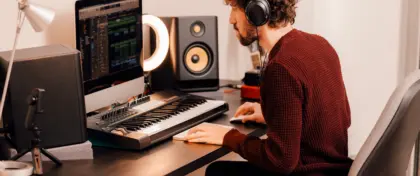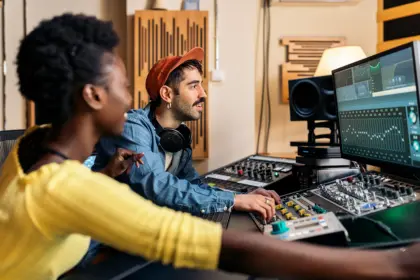
Hearing Protection for Music Professionals: Safeguarding the Sound of Your Career
For music professionals—whether performers, producers, sound engineers, or teachers—hearing is not just a sense; it's a vital tool of the trade. Yet, prolonged exposure to high sound levels can cause irreversible hearing damage, often without immediate warning signs. Understanding the risks and taking proactive steps to protect your hearing is essential to sustaining a long and healthy career in music.
The Risks: How Sound Can Harm
Noise-induced hearing loss (NIHL) and tinnitus (a persistent ringing or buzzing in the ears) are common occupational hazards in the music industry. Sound levels at concerts, rehearsals, and even in studio environments often exceed safe thresholds. The World Health Organization suggests that exposure to sounds above 85 decibels (dB) for extended periods can be harmful—and many musical environments regularly exceed this.
Musicians are particularly vulnerable because they are often exposed to both high volumes and long durations of sound. Once damaged, the sensitive hair cells in the inner ear cannot regenerate, making prevention critical.
Signs of Hearing Damage
- Ringing or buzzing in the ears (tinnitus)
- Muffled hearing after exposure to loud music
- Difficulty understanding speech in noisy environments
- A sense of fullness in the ears
These symptoms may appear gradually, so regular hearing checks are crucial for early detection and management.
Protective Measures for Music Professionals
1. Custom-Made Earplugs
These are designed specifically for musicians. Unlike foam or generic earplugs, they preserve sound fidelity while reducing volume evenly across frequencies. Brands like ER, ACS, and Westone offer filters with different dB reduction levels, allowing musicians to choose protection without compromising audio quality.
2. In-Ear Monitors (IEMs)
Widely used by live performers, IEMs provide clear audio at lower volumes and block out external noise. Custom-fit IEMs can significantly reduce stage volume exposure and are a smart investment for regular performers.
3. Monitor Sound Levels
Whether in the studio or on stage, being aware of volume levels is key. Use sound level meters or smartphone apps to monitor your environment. Keep rehearsals and mixing sessions at safe volumes when possible.
4. Scheduled Quiet Time
Just as muscles need rest after physical strain, your ears need downtime to recover from exposure. Build regular quiet periods into your schedule—particularly after gigs or studio sessions.
5. Regular Hearing Tests
Annual hearing evaluations by an audiologist can catch early signs of damage. Many hearing specialists now offer services tailored to musicians, providing more relevant insights and advice.
Changing the Culture
Protecting your hearing should be seen as a professional standard, not a compromise. Advocating for safer sound practices within bands, studios, and venues helps shift the cultural norm. Music education institutions should also integrate hearing health into their training to equip the next generation of professionals with the knowledge to safeguard their future.
Conclusion
As a music professional, your hearing is one of your most valuable assets. Taking the time to protect it with proper equipment, awareness, and habits is an investment in your craft and career longevity. By embracing hearing protection, you’re not limiting your artistry—you’re preserving your ability to create, perform, and enjoy music for years to come.




